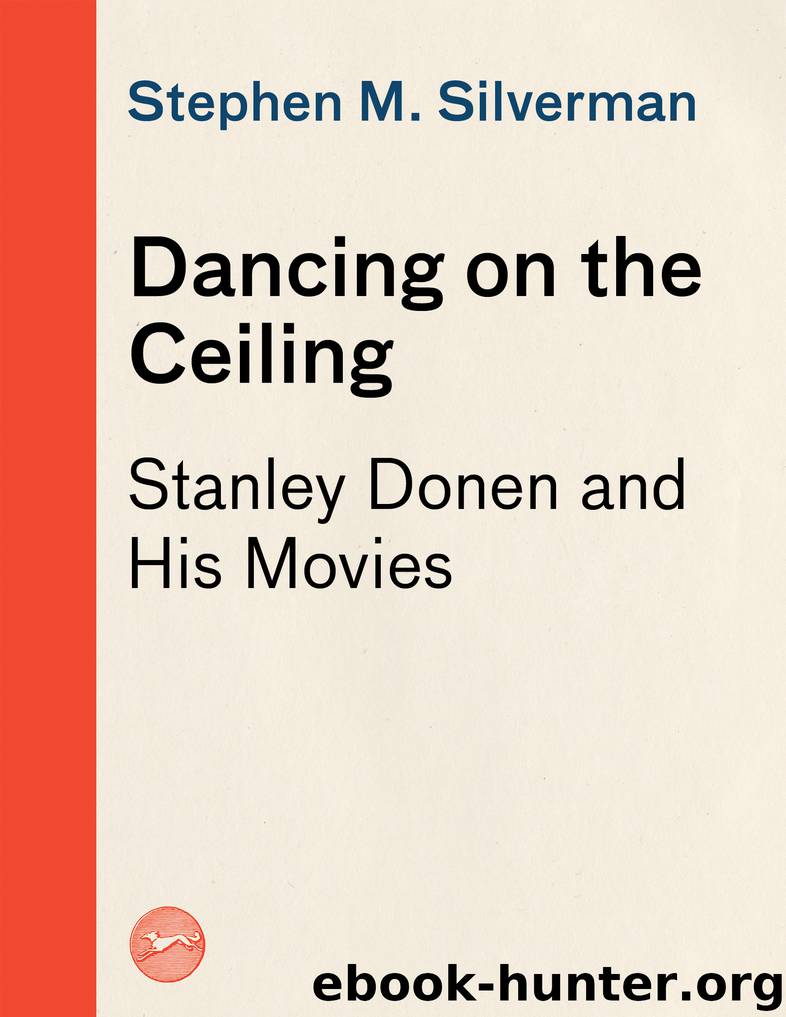Dancing on the Ceiling by Stephen M. Silverman

Author:Stephen M. Silverman
Language: eng
Format: epub
Publisher: Knopf Doubleday Publishing Group
Published: 2019-04-02T16:00:00+00:00
Chapter 7
“Whatever You Want, Michael”
STANLEY WAS one of the first people I met when I came to Hollywood,” said the choreographer Michael Kidd in 1992. To prove how small a world it was, forty-eight years before, in 1944, Kidd, then twenty-five, danced as one of the leads in the Robbins-Bernstein Fancy Free. By the next year, Kidd was a Broadway choreographer, and by 1947, a Broadway name, thanks to his work on Finian’s Rainbow. By the 1950s, Michael Kidd was the reigning Broadway choreographer; if, earlier, Agnes de Mille had given the theatrical dance world its grace, and Jerome Robbins gave it its vital integration of movement meshed with the book, then Michael Kidd injected Broadway with a shot of adrenaline. In his signature 1950 Guys and Dolls, the choreographer’s energetic positioning of the characters, whether they were scrutinizing the Racing Form amid the bustle of Times Square or anxiously rolling the dice inside the deepest recesses of the New York steampipe system, was every bit as instrumental in conveying the Runyonesque quality of the piece as was the street-poet babble of the protagonists and the colorful brilliance of the Frank Loesser score.
“In choreography,” explained Kidd, traces of his Brooklyn and City College origins still evident in his voice, “ordinary movements from real life are taken and extended, so they become dance movements, yet the relation to reality must always be there.” In creating a dance or, for that matter, any routine, he said, “It’s important for me to know who the characters are and what their function is in the script. From there I must be able to illustrate either their activities, their emotions, or their changes in mood by the way they dance, all the while keeping the dance footed in reality and yet making the movements sort of odd and eccentric. This way what they do doesn’t look as ordinary as just having a person come in, pull up a chair, and sit down.”
As for the Donen connection, said Kidd, “In those days the theater community in New York was very small—it’s probably smaller now. Everybody knew everybody. When I came out to Hollywood, I met Stanley through Saul Chaplin, whom I had met in New York.” Chaplin, a Tin Pan Alley composer and musical arranger, seemed to travel a similar Hollywood route as Donen’s; Chaplin was at Columbia for Cover Girl and at M-G-M for the musicals that followed.
Kidd’s first job at Metro-Goldwyn-Mayer was to choreograph The Band Wagon, to be produced by Freed and directed by Vincente Minnelli. Kidd’s contract called for twenty weeks at the studio, which astounded him, given the customary five weeks a choreographer was generally allotted on Broadway.
Fretting over the ramifications of what four times that amount of time might possibly entail, the still-novice movie choreographer*1 turned to Donen and asked, “What am I going to do for twenty weeks?”
“For three weeks,” replied Donen, “you’re going to mull.”
“What do you mean, ‘mull’?”
“First, you’re going to have meetings and you’re going to plan the musical numbers,” said Donen.
Download
This site does not store any files on its server. We only index and link to content provided by other sites. Please contact the content providers to delete copyright contents if any and email us, we'll remove relevant links or contents immediately.
| Actors & Actresses | Directors |
The Kite Runner by Khaled Hosseini(4500)
Gerald's Game by Stephen King(3941)
The Perils of Being Moderately Famous by Soha Ali Khan(3795)
Dialogue by Robert McKee(3603)
Story: Substance, Structure, Style and the Principles of Screenwriting by Robert McKee(3002)
The 101 Dalmatians by Dodie Smith(2951)
The Pixar Touch by David A. Price(2752)
Confessions of a Video Vixen by Karrine Steffans(2690)
Fantastic Beasts: The Crimes of Grindelwald by J. K. Rowling(2557)
How Music Works by David Byrne(2554)
Slugfest by Reed Tucker(2433)
Harry Potter 4 - Harry Potter and The Goblet of Fire by J.K.Rowling(2426)
The Mental Game of Writing: How to Overcome Obstacles, Stay Creative and Productive, and Free Your Mind for Success by James Scott Bell(2403)
Wildflower by Drew Barrymore(2125)
Scandals of Classic Hollywood: Sex, Deviance, and Drama from the Golden Age of American Cinema by Anne Helen Petersen(2119)
Casting Might-Have-Beens: A Film by Film Directory of Actors Considered for Roles Given to Others by Mell Eila(2078)
Screenplay: The Foundations of Screenwriting by Syd Field(2075)
Robin by Dave Itzkoff(2017)
The Complete H. P. Lovecraft Reader by H.P. Lovecraft(1984)
